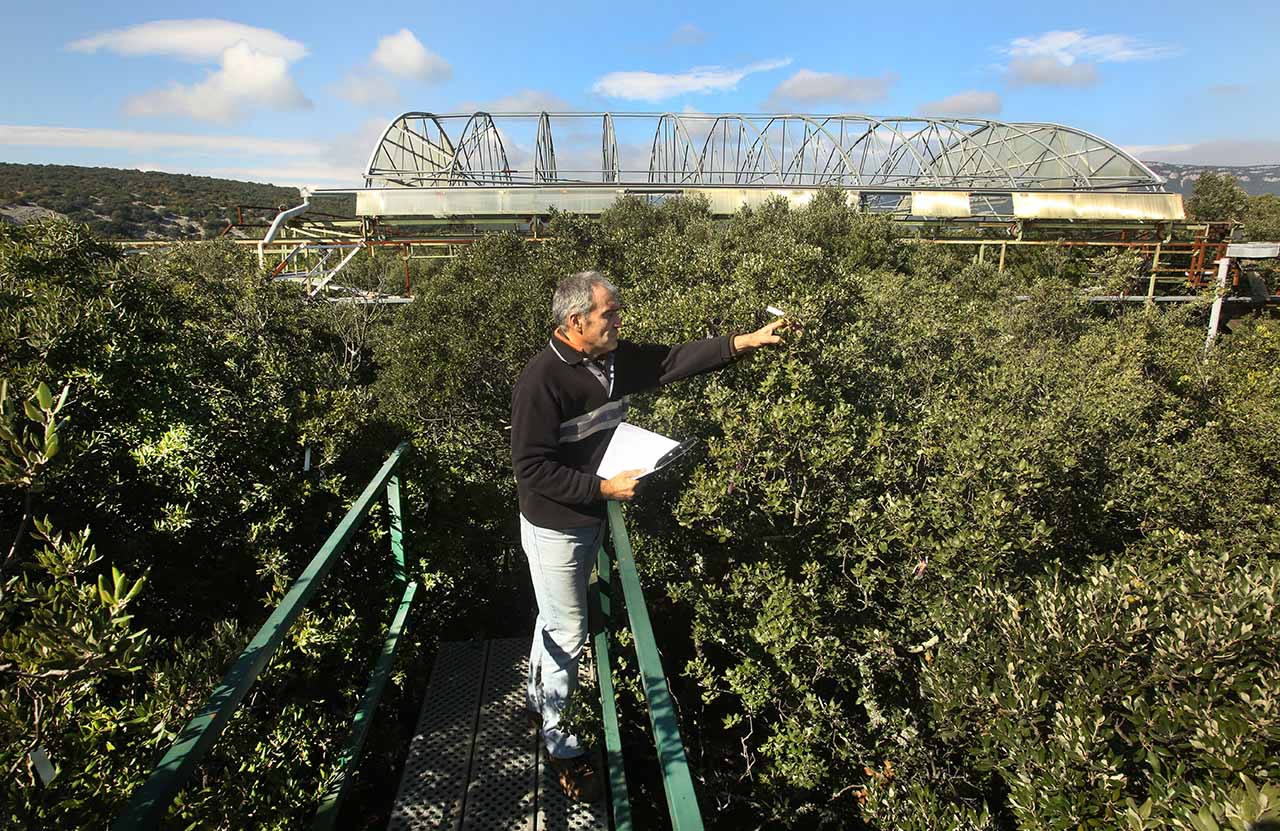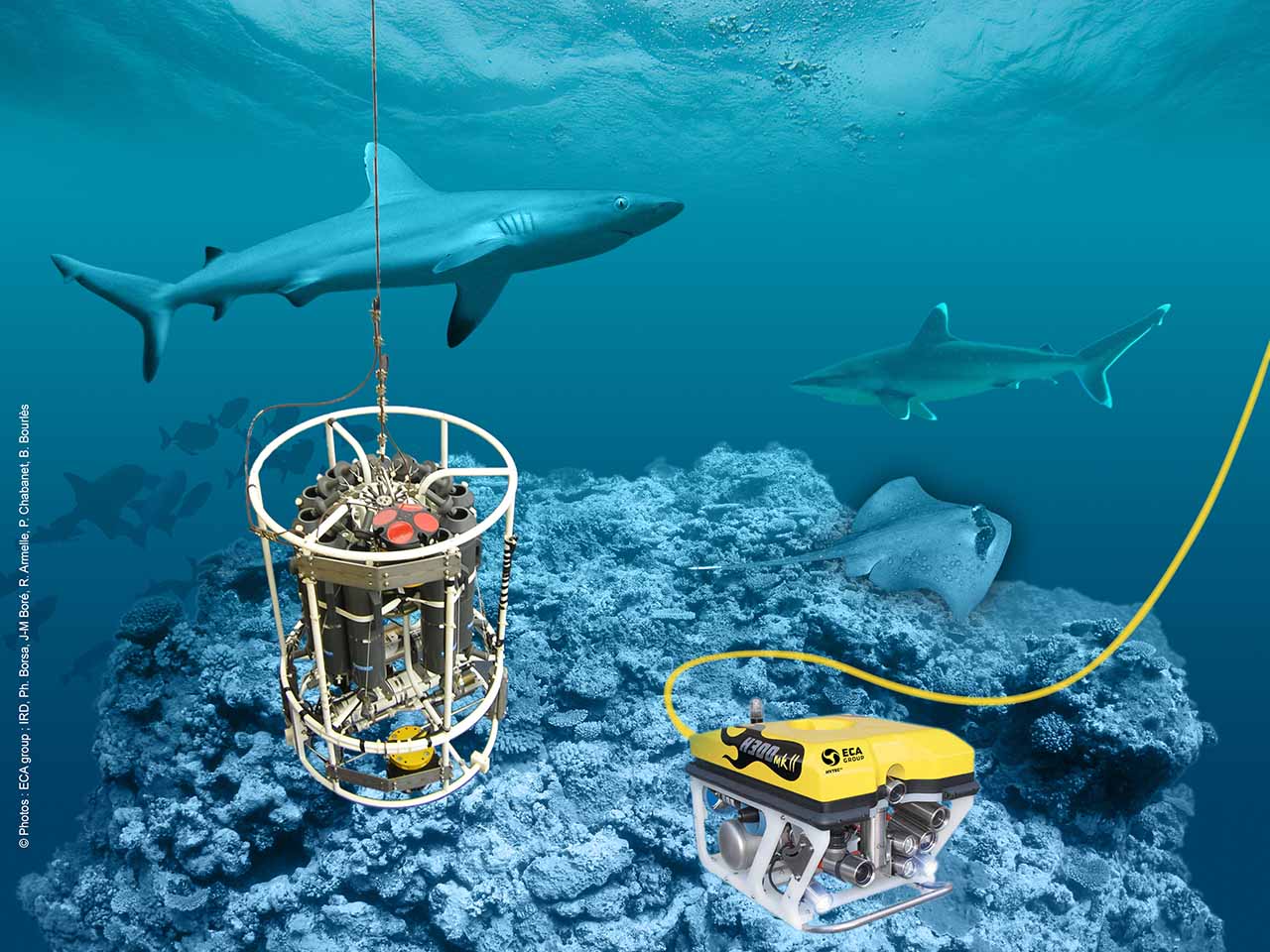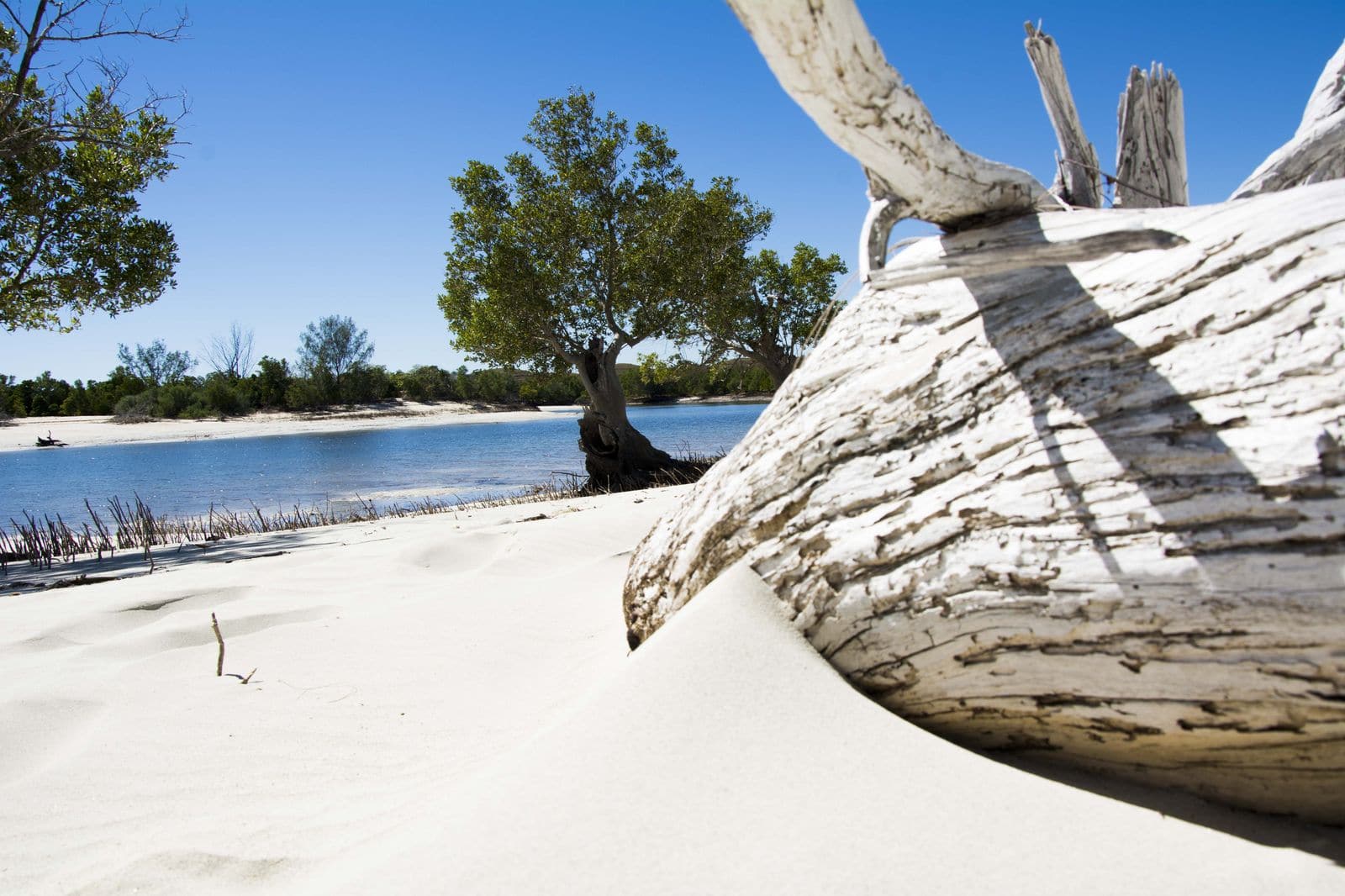Man in his environment
Our planet is fragile: this new awareness has left its mark on the 21st century. With its partners, Montpellier Université d'Excellence is committed to a science that is fully responsible for the future of mankind and its environment.
Drought warning for the canopy

Patrick Aventurier
30% less rain: that's what climatologists are predicting for 2100. And the drought has been getting worse in recent years. At Puéchabon, some thirty kilometers from Montpellier, our researchers are accelerating the drought phenomenon to better understand it.
Rest assured, everything is under control. Here, the Centre d'Ecologie Fonctionnelle et Evolutive (CEFE) has transformed the holm oak forest into an open-air laboratory. To selectively increase dryness, researchers have installed a system of gutters that collect rainwater before it infiltrates the soil. They also have a mobile roof of over 200 m2 that can be moved over the forest to shelter certain plots.
The forest is studied from all angles thanks to a footbridge installed in the canopy, which enables scientists to take measurements on leaves and branches, while a " flow tower " continuously measures the forest's carbon and water balance.
These devices enable us to study the ecosystem's behavior in the face of climate change. Researchers are studying the development of leaves, flowers and acorns on branches that have been monitored for several years in the canopy of Puéchabon's holm oaks. How will the holm oaks stand up to the dry climate ahead? Firstly, they are reducing the number of leaves on their branches to reduce transpiration and save water.
Mapping the hidden life of the oceans

ECA Group, IRD, Ph. Borsa, J-M Boré, R. Armelle, P. Chabanet, B. Bourlès
Better understanding for better protection: this is also the aim of the "Megafauna" expedition. The research field here is the ocean without borders. In July 2017, led by David Mouillot from the Marbec laboratory, a team of researchers set off to map ocean life that is still poorly understood. Three years of expedition, to take the pulse of tropical seas and draw up an unprecedented inventory of marine life, including large bony fish, sharks, mammals... These fragile giants that populate the oceans are particularly vulnerable to fishing and global changes: they represent a quarter of species threatened with extinction.
Funded by the Centre Scientifique de Monaco, the expedition benefits from a major asset: the 80-metre oceanographic vessel Yersin, with its reinforced hull, is ready to venture into all the world's seas. The Yersin will cover all tropical waters, visiting most of the French overseas territories (Antilles, Polynesia, New Caledonia and the Coral Sea, Tromelin, etc.) and many southern countries (Cape Verde, Mauritius, Seychelles, etc.).
The expedition is based on a revolutionary scientific process. Like forensic scientists, the researchers will track down the "environmental DNA " left in the wake of marine creatures. On arrival, researchers will have at their disposal an unprecedented cartography of life in the oceans: a gigantic DNA catalog drawn up at almost 2,000 sites across the tropical seas.
Biodiversity's ultimate paradise

Opti'Pousse Haie
The University of Montpellier also supports student associations and initiatives. Summer 2017: 6 UM students take the plunge into the unknown, heading for the Indian Ocean. Their project - to create a marine protected area in Madagascar - is supported by the university's Fonds de solidarité et de développement des initiatives étudiantes.
Nosy Lava, a small fishing island in northern Madagascar, is a paradise of terrestrial, coastal and marine biodiversity. But a paradise under threat. Poaching, animal trading, destruction of mangroves, intensive fishing... Animal species have already disappeared, like the emblematic dugong; turtles are slaughtered for their meat, and fish are over-fished. This over-exploitation of resources is mainly the work of outsiders. This poses a direct threat to local populations, who are directly dependent on these natural resources.
At the University of Montpellier's Faculty of Science, six third-year biology-ecology students are taking action. Marie, Ninon, Florine, Tiffany, Quentin and Gaël have named their project Protect Mada. Supervised by the Opti'Pousse Haie association, they are drawing up an inventory of the island's biodiversity and analyzing its resources, with the aim of demonstrating the island's ecological and cultural value.
Their aim is also to raise awareness of environmental preservation within the local community, and to get them fully involved in the project. The students have just completed the first part of the project: they are about to submit the preliminary application for the creation of the marine area.
The number: 2
This is UM's world ranking in ecology, according to the latest Shanghai ranking. The UM is second only to Oxford University, and ahead of other prestigious institutions such as California's University of Berkeley (4th).
I-SITE MUSE
 " Feeding, caring, protecting" three global challenges for the 21st century at the heart of the MUSE I-SITE.
" Feeding, caring, protecting" three global challenges for the 21st century at the heart of the MUSE I-SITE.
The MUSE "Montpellier Université d'Excellence" (Montpellier University of Excellence) project mobilizes the strengths of 19 institutions towards a common ambition: to create a research-intensive thematic university in Montpellier, internationally recognized for its impact in fields related to agriculture, the environment and health, likely to become an academic partner for all the members of the consortium, with which they will have strong links and on which they will be able to rely.